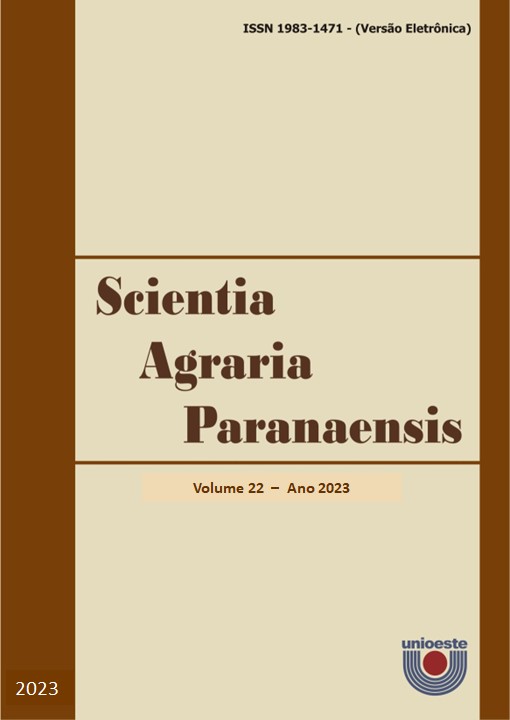WATER QUANTIFICATION METHODS IN HARDENING OF WOODY SPECIES WITH METIL JASMONATE AND STEM BENDING.
DOI:
https://doi.org/10.18188/sap.v22.32051Abstract
The objective of this work was to evaluate the destructive and non-destructive methods of quantification of the water content of the soil in leaves of plants oxidized with jasmonic acid and stem bending. The seedlings were subjected to 20 stem bending daily; 50 μmol L-1 methyl jasmonate applied weekly; and a control treatment, for eight weeks. Afterwards they were submitted to the water restriction and to the moisture content during the period biweekly through the drying destructive method and by non-destructive-method. For I. sessilis the beginning of the imitation of the water restriction, the limitations indicated a lower hydration content for the stem bending, but for the alternative method, as the did not differ from the control. At fifteen days, the treatments were demonstrated between the two senses and evaluations. The third alternate day is indicated for the control with shorter duration, as well as a nondestructive evaluation, however, for a change in the control of jasmonato. For N. grandiflora, the destructive method is not able to differentiate the diameters of the water process, whereas the cauline crushes expressed the lowest humidity, not differing from the jasmonato, according to the alternative. At 15 days, the treatments did not differ among themselves and according to the methodologies. The three days, the methods of destructive indicated greater humidity to the flexionated and the treatment did not differ between the by the alternative method.
Downloads
Published
How to Cite
Issue
Section
License
Aviso de Direito Autoral Creative Commons
Política para Periódicos de Acesso Livre
Autores que publicam nesta revista concordam com os seguintes termos:
1. Autores mantém os direitos autorais e concedem à revista o direito de primeira publicação, com o trabalho simultaneamente licenciado sob a Licença Creative Commons Attribution que permite o compartilhamento do trabalho com reconhecimento da autoria e publicação inicial nesta revista.2. Autores têm autorização para assumir contratos adicionais separadamente, para distribuição não-exclusiva da versão do trabalho publicada nesta revista (ex.: publicar em repositório institucional ou como capítulo de livro), com reconhecimento de autoria e publicação inicial nesta revista.
3. Autores têm permissão e são estimulados a publicar e distribuir seu trabalho online (ex.: em repositórios institucionais ou na sua página pessoal) a qualquer ponto antes ou durante o processo editorial, já que isso pode gerar alterações produtivas, bem como aumentar o impacto e a citação do trabalho publicado (Veja O Efeito do Acesso Livre).
Licença Creative Commons
Esta obra está licenciada com uma Licença Creative Commons Atribuição-NãoComercial-CompartilhaIgual 4.0 Internacional, o que permite compartilhar, copiar, distribuir, exibir, reproduzir, a totalidade ou partes desde que não tenha objetivo comercial e sejam citados os autores e a fonte.


